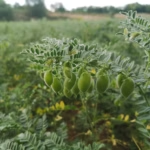Conducting a SWOT analysis (Strengths, Weaknesses, Opportunities, and Threats) is a valuable exercise for any business, including an agroprocessing business. It helps identify internal strengths and weaknesses as well as external opportunities and threats that can impact the business. Here’s a step-by-step guide on how to conduct a SWOT analysis for an agroprocessing business:
- Define the objective: Determine the purpose of conducting the SWOT analysis. Are you looking to evaluate the overall business, a specific product, or a new market entry? Clearly define what you want to analyze to focus your efforts.
- Identify strengths:
- Internal factors: Determine the positive attributes and advantages of your agroprocessing business. These could include factors like strong product quality, advanced technology, efficient supply chain, skilled workforce, established brand reputation, or intellectual property rights.
- Competitive analysis: Assess how your agroprocessing business compares to competitors in terms of strengths. Identify what sets you apart from others in the industry.
- Determine weaknesses:
- Internal factors: Identify areas where your agroprocessing business lacks or needs improvement. Consider aspects such as outdated machinery, limited distribution channels, insufficient marketing efforts, lack of diversification, or any other internal limitations.
- Competitive analysis: Recognize the areas where competitors outperform your business. This can shed light on the weaknesses that need to be addressed.
- Explore opportunities:
- External factors: Look for potential opportunities in the agroprocessing industry. This could involve factors like emerging markets, changing consumer preferences, technological advancements, government incentives, or partnerships with suppliers or distributors.
- Market analysis: Identify gaps or untapped areas within the market where your agroprocessing business can expand or introduce new products.
- Analyze threats:
- External factors: Assess the external challenges and threats that could impact your agroprocessing business. Consider factors like intense competition, changing regulations, price fluctuations of raw materials, economic instability, or environmental factors such as climate change.
- Market analysis: Identify potential threats from competitors, including their market dominance, new entrants, or disruptive technologies.
- Evaluate and prioritize:
- Analyze the findings from your SWOT analysis and prioritize the most critical factors.
- Consider the impact of each element on your business and determine the level of urgency in addressing them.
- Look for connections between different elements. For example, a strength may help you capitalize on an opportunity, or a weakness may make you more susceptible to a particular threat.
- Develop strategies:
- Build upon your strengths and seize opportunities: Determine how you can leverage your strengths to take advantage of the identified opportunities.
- Address weaknesses and mitigate threats: Formulate strategies to overcome weaknesses and minimize the impact of threats. This could involve investing in infrastructure, improving processes, implementing cost-saving measures, or diversifying your product range.
- Implement and review:
- Implement the strategies and action plans you developed based on your SWOT analysis.
- Regularly review and monitor your progress to ensure you’re on track and make adjustments as necessary.
- Conduct SWOT analyses periodically to stay updated with the changing business environment.
Remember, a SWOT analysis provides valuable insights, but it should be complemented with a detailed business plan and market research to make informed decisions for your agroprocessing business.








